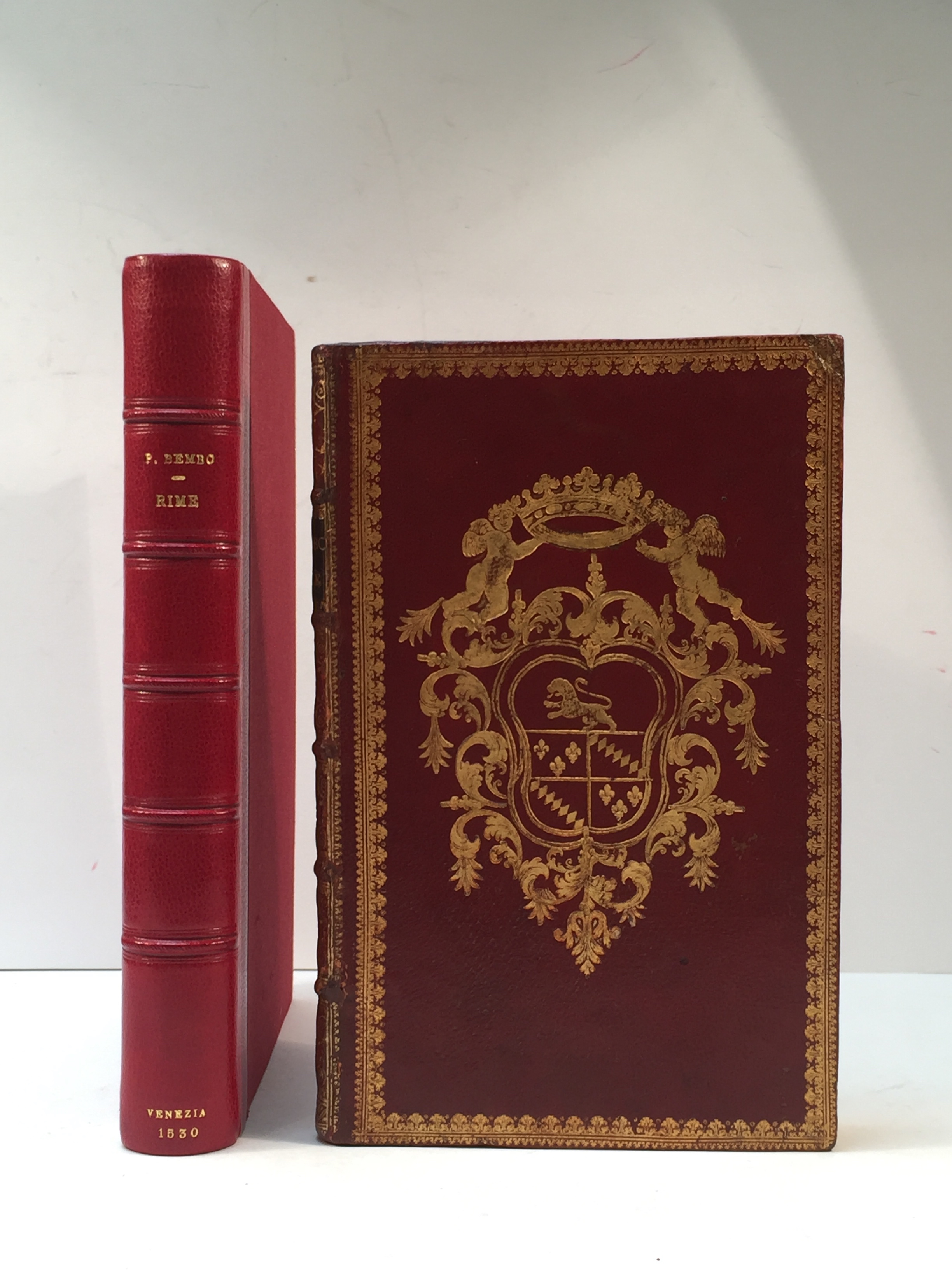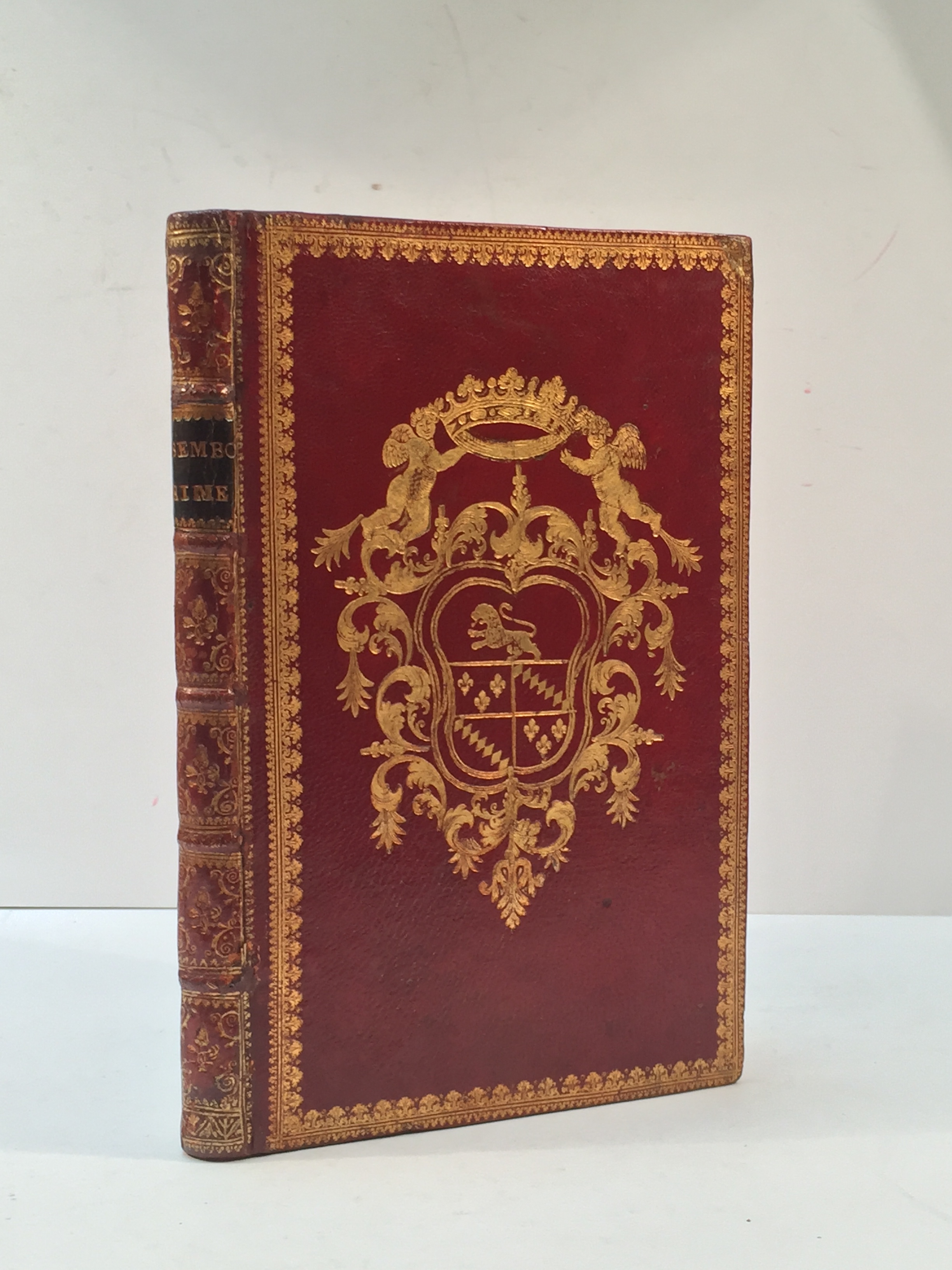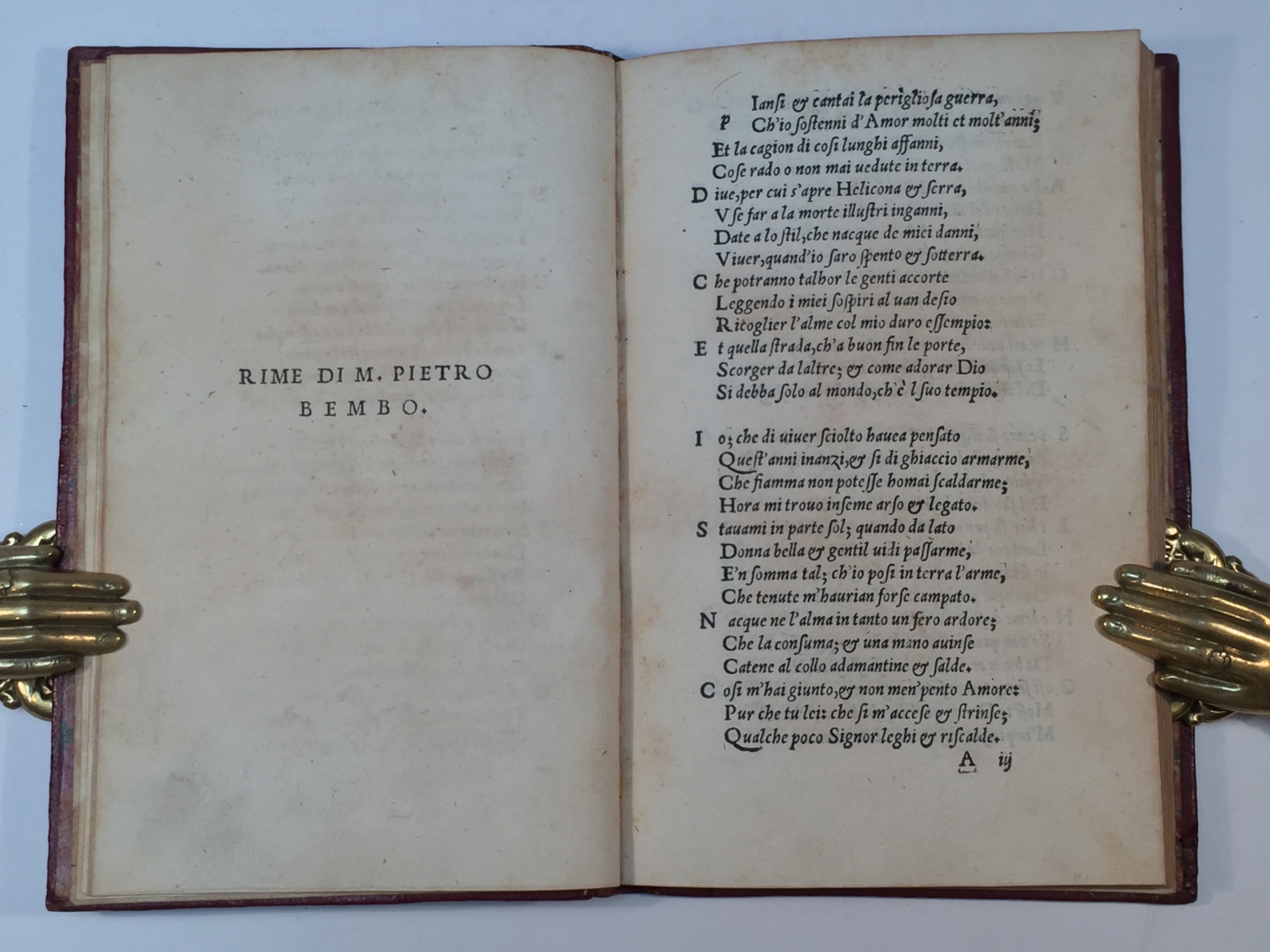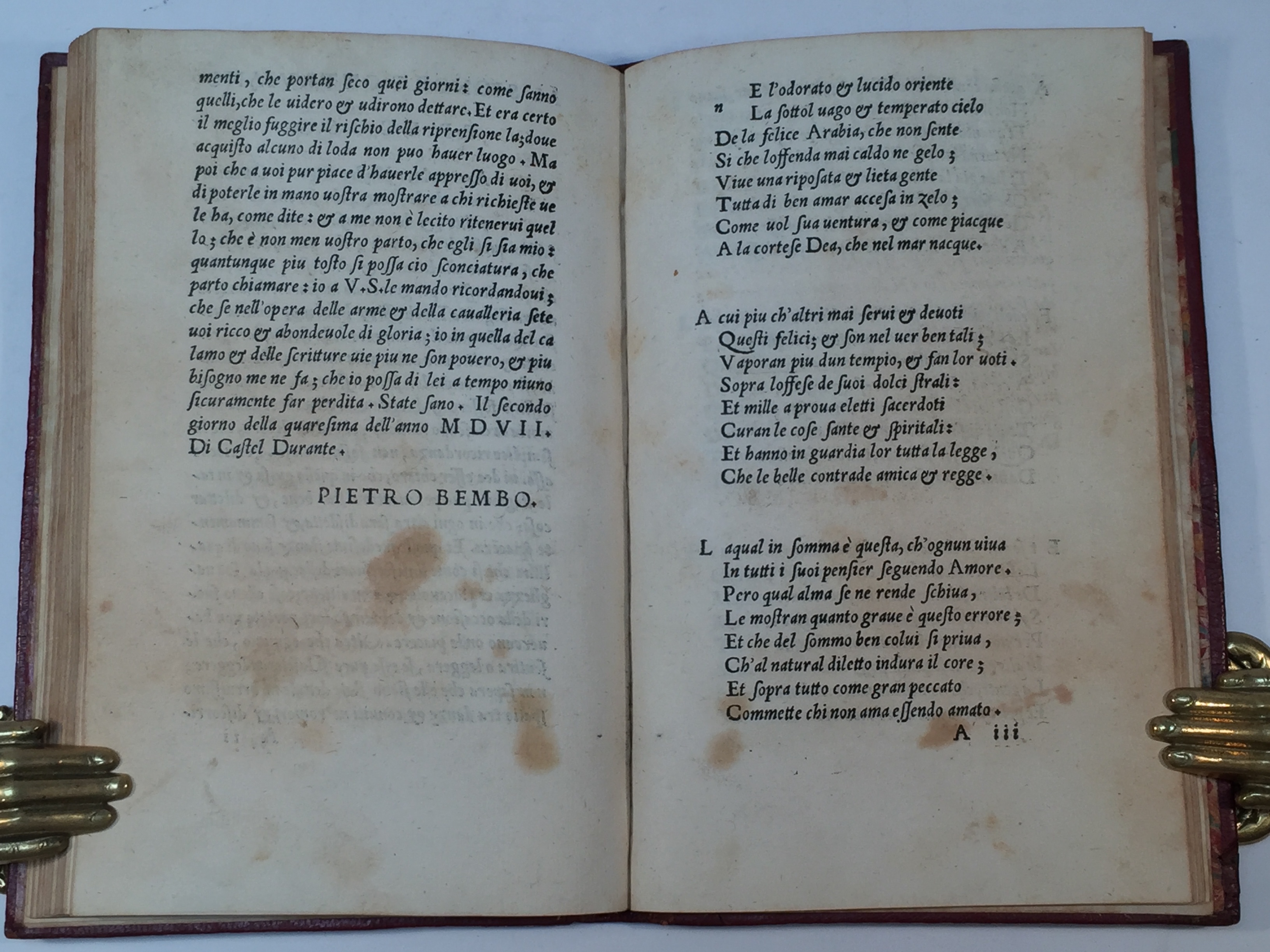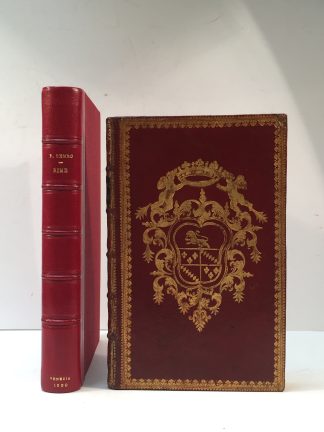BEMBO, Pietro
A DOGE’S BINDING
Rime di Pietro Bembo
Venice, per Giovanni Antonio Nicolini da Sabbio & fratres, 1530£13,500.00
FIRST EDITION. 4to. ff. 54 unnumbered, A-D8 F10 A-C4, first and last blank. Italic letter, occasional Roman. Slight age browning and marginal foxing in places, light oil stain to first couple of gatherings, occasional thumb marks. A very good, well-margined copy, on thick paper, in C18 crimson morocco, gilt double-ruled border with dots and palmettes, gilt arms of Doge Marco Foscarini to covers, roll of palmettes to edges, comb-marbled pastedowns, a.e.g. Spine double gilt ruled in six compartments, roll of fronds, cornerpieces and acorn tool to each, raised bands, a couple of minor cracks to joints, expert repair to upper outer corner of front cover, and joint of lower at head and foot. The odd early annotation. In folding box.
The very handsome binding was produced for the bibliophile Marco Foscarini (1696-1763), a poet and diplomat who served as 117th Doge of Venice between 1762 and 1763, when his office was cut short by illness and death. It is an almost exact match with BL C47d10, probably made in Rome where Foscarini was ambassador for Venice between 1736 and 1740 (‘BL Bookbindings Database’).
Very good copy of the first edition of Pietro Bembo’s ‘Rime’. Born in Venice, Bembo (1470-1547) was a scholar, poet, critic and later cardinal. After his studies at Messina and Padua, he travelled extensively in Italy; his love for the Tuscan vernacular, which he considered the perfect language for Italian literature, developed during a stay in Florence. In 1525, he published ‘Le prose della volgar lingua’, a ground-breaking work of philology and literary criticism celebrating the cultural value of the vernacular versus Latin and electing Dante, Petrarch and Boccaccio—masters of the Tuscan vernacular whose works he also edited—as the highest models for Italian poets. Bembo followed his own advice in ‘Rime’, a collection featuring sonnets and longer poems. A jewel of Renaissance literature, ‘Rime’ pays tributes to the ‘Three Crowns’, especially celebrating the half-angelic/half-earthly ‘gentile’ lady of Dante’s ‘dolce stil novo’, who gives ‘vigour’ to the flowers around her, as well as Petrarch’s fleeting muse Laura, whose look can make the poet feel ‘burning and tied’ and experience ‘joy mixed with torment’. The light-hearted stanzas at the end of the work, focusing on love and its effects, were originally composed to be read at a masquerade organized by the Duchess of Urbino. This first edition of the ‘Rime’ includes the introductory letter to Ottaviano Fregoso dropped from later ones.
BM STC It., p. 81; Graesse I, 332; Gamba 141 (only mentioned): ‘prima rara ristampa’. Not in Brunet.In stock


